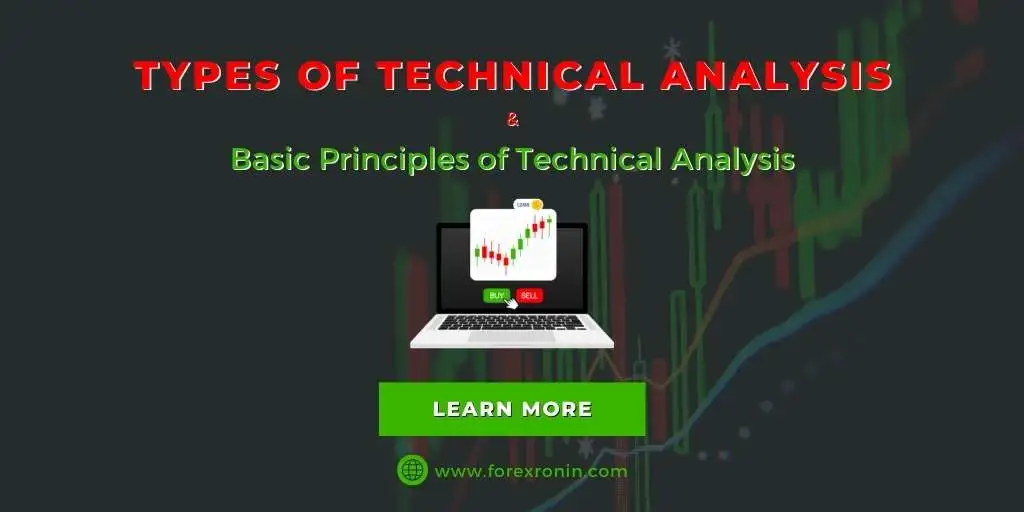As a trade, technical analysis can be considered as one of the major aspects that a trader looks forward to. Well, if you are still not sure what is technical analysis? and how can you use technical analysis in trading? This article is for you.
Technical analysis is a trading discipline that is used to assess investments and discover trading possibilities via reading statistical tendencies accrued from buying and selling activities and operations, which includes charge motion and volume. Unlike essential analysis, which tries to evaluate a protection’s cost based on commercial enterprise consequences consisting of sales and earnings, technical analysis makes a specialty of the have a look at price and volume.
Well, as an overview, for a simple understanding most of the things related to your charts and instruments that you use for performing analysis over charts can be considered under the roof of technical analysis. These technical analysis instruments include a whole lot of things. For example, the trendlines, channels, chart patterns, etc. also fall into the technical analysis.
As to make things even better for you to understand, another important aspect is that of the fundamental analysis, well, the news and the overall information for a certain currency can be counted among the fundamental analysis. For example, the US Fed meeting just ended, or maybe the unemployment rates just came out publicly, which indicated the bearish indications on the USD, all this news, reports, and data can be considered as part of fundamental analysis.
What is Technical Analysis?
In finance, technical analysis is an analysis method for analyzing and forecasting the course of costs via the study of beyond marketplace records, basically rate and quantity. Behavioral economics and quantitative evaluation use among the equal tools of technical evaluation, which, being an element of lively control, stands in contradiction to tons of contemporary portfolio concepts.
The efficacy of both technical and fundamental analysis is disputed with the aid of efficient-marketplace speculation, which states that stock marketplace prices are basically unpredictable, and studies on whether or not technical analysis offers any advantage have produced combined consequences.
🤔Is Quantitative analysis different from Technical analysis?
If you are someone who has been revolving around this question, what’s the difference between quantitative analysis and technical analysis? Well, they aren’t different from each other if we talk as an overview. It can be said that both technical analysis and quantitative analysis can be synonyms of each other in one way or another. Now if we consider the people who do not agree with it. For example, Quantitative analysis expert Paul Wilmott shows technical evaluation is little extra than ‘charting’ (making forecasts primarily based on extrapolating graphical representations), and that technical evaluation rarely has any predictive strength.
As I have already mentioned earlier, that technical analysis focuses more on chart analysis and patterns. The below-mentioned section will help you get a better overview of what technical analysis includes in terms of chart patterns, terms, etc.
| Overlays in Technical Analysis | Price-Based Indicators in Tech. Analysis |
| Channels | Commodity Channel Index |
| Bollinger Bands | MACD |
| Ichimoku | Momentum |
| Moving average | Relative Strength Index |
| Parabolic SAR | Relative Vigor Index |
| Resistance | Stochastic Oscillator |
| Support | Trix |
| Trend line | Vortex Indicator |
| Zig Zag | |
| Pivot Points |
😶🌫️ Other important Charting terms and Indicators
| Combining Two Indicators | Breadth Indicators | Volume Based Indicators |
| MACD & avg. directional index | Advance-decline line | Money flow index |
| MACD & Moving average | McClellan Oscillator | Accumulation & distribution index |
| MACD & RSI | McClellan Summation Index | On-balance volume |
| MACD & Super Trend |
😉Basic Concepts of Technical Analysis, you might wanna take a look at!
- Average True Range: Average Trend Range (ATR) is a technical evaluation volatility indicator at the beginning evolved by means of J. Welles Wilder, Jr. For commodities, the indicator does not offer a demonstration of rate trend, clearly the degree of charge volatility.
- Breakout: A breakout is when expenses pass through and stay via a place of guide or resistance. At the technical evaluation chart, a getaway occurs while the charge of a stock or commodity exits an area pattern. This basically helps in getting along with support, resistance, trend lines, and much more.
- Chart Pattern: I guess, you might be familiar with what chart pattern is, the head & shoulder charts, zig-zags, etc. These patterns give a better understanding of how the market is performing depending upon the volume, news, etc. basically giving a better overview.
- Cycles: The cycles basically refer to the time targeted cyclic changes in the chart/trend, or we can say the potential changes that might occur over the website (the price move up, down or sideways)
- Trending: A market trend basically refers to the perceived tendency of monetary markets to transport in a selected course over time. Analysts classify those traits as secular for long term-frames, number one for medium time-frames, and secondary for short time-frames.
- Elliot wave principle: Elliot wave principle focuses on the wave principle, well all these waves can work upon the charts of different type i.e. you can also perform this analysis principle over candlesticks, etc. as well.
- Momentum: The momentum basically refers to the movement in the chart pattern around some trend, well, you can call it the speed of change in market structure, well, this can totally depend upon the volume, and many other factors.
- Resistance: You might be well aware of what resistance is? Well, in simple words it can be called as an important level or price point, which is not being broken or might be touched multiple times while the price was moving up.
- Support: Similar to what was mentioned for resistance also works in a similar approach but in a downward trend. Support and resistance are often considered by most traders in their trading system/strategy.
- Fibonacci ratios: The fibs can be really helpful in order to check out the probability of how the market might change or move based upon some simple but effective mathematical equations. Traders usually use Fibonacci retracement, etc. in their trading strategies/system.
Should I use technical analysis? Can it impact me negatively?
Well, of course, you should be using technical analysis in your trading system, but I won’t recommend you to use technical analysis blindly as working upon fundamentals along with some other factors can also be important for your trading system. I usually use 60% of technical analysis and roughly 40% of fundamental analysis. What’s your style, do let me know in the comment section.
In addition to all this, if you are new to forex trading and have been wondering around the question Is it hard to learn forex trading? Check out our article on a mini roadmap on what are some of the key factors that you might wanna look forward to as a forex trader.
I hope this small article would have helped you in some way or the other, and sorry if we come across any mistakes as this is my first article.
Keep Trading!!






[…] that I have mentioned below do not focus on sending free signals but also focus on what their trade analysis is and what they think about that forex setup, rather than just going blindly on what signal you […]
[…] like what really is forex trading? While also focusing on some of the other things as well like technical analysis and fundamental […]